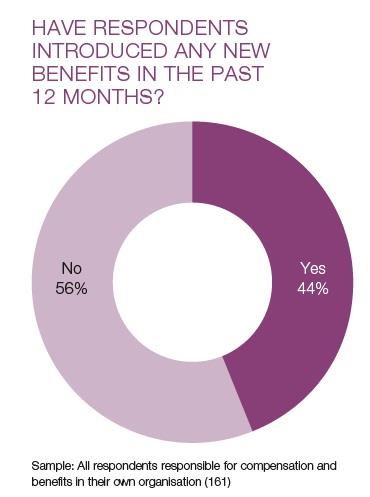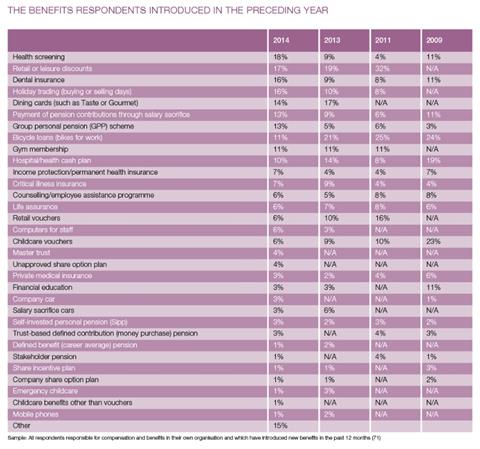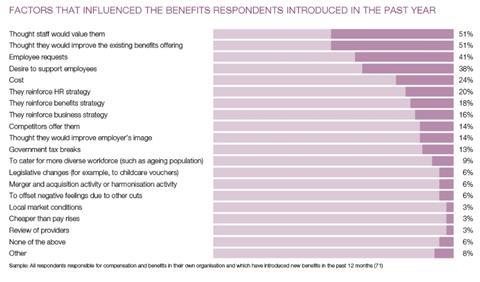Health screening and group personal pension (GPP) plans saw the biggest growth as new benefits introduced by employers over the past year, according to The Benefits Research 2014, which surveyed 256 respondents in March 2014.

Just under half (44%) of respondents introduced new benefits to their organisation in the past 12 months.
Despite the economic volatility over the past year, the proportion of respondents introducing new benefits in the previous 12 months has remained relatively steady in the past six years.
Health screening has seen a significant rise in popularity in the past 12 months. Some 18% of respondents introduced this perk, propelling it to the top of the list of newly-introduced benefits.
The proportion of respondents introducing GPPs has also jumped significantly over the past year, possibly as a result of employers having to comply with auto-enrolment legislation.
Retail or leisure discounts, dental insurance and holiday trading also remain popular.
The proportion of respondents that have introduced tax-efficient benefits has continued to fall. This year, the proportion that introduced bikes for work in the past 12 months has fallen to 11% from 21% in 2013, 25% in 2011 and 24% in 2009.
Meanwhile, just 6% of this year’s respondents introduced childcare vouchers, down from 9% in 2013, 10% in 2011 and 23% in 2009.
These reductions may be because employers have already implemented such perks to take advantage of the tax breaks available.
The top reason for employers to introduce benefits – because they thought staff would value them – has also remained unchanged since we first asked this question in 2009, with 51% of respondents giving this reason.
This year, this shares the top spot with the fact that employers thought their new benefits would improve their reward offering. This reinforces the need to ensure benefits remain fresh in order to appeal to staff.
However, the proportion of respondents that introduce benefits to improve their image as an employer has continued to fall. Just 14% said this was the case this year, compared with 21% in 2013 and 43% in 2009.



















